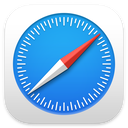LESSON 04 : Credit Reports
Course
Master the essentials of credit reports—what they are, how they're structured, what they include or exclude, and how they impact your financial future—in 10 concise micro-learning modules.
This micro-learning course provides a comprehensive yet accessible introduction to credit reports. Over 10 focused modules, you'll explore the structure and purpose of credit reports, examining each main section—Personal Information, Inquiries, Credit Accounts, and Public Records—to understand what is included and why. You'll learn where credit report data comes from, including the roles of lenders, collection agencies, and credit bureaus. The course also clarifies which types of personal information are deliberately excluded from credit reports to ensure fairness and prevent discrimination. Special attention is given to how public records and credit inquiries affect your credit profile. By the end, you'll be equipped to confidently interpret, monitor, and protect your credit report, making smarter financial decisions and safeguarding your financial identity.
Here is the course outline:
1. Introduction to Credit ReportsOverview: Defines what a credit report is and why it matters in everyday financial life. What you will learn: The purpose of credit reports, who maintains them, and how they act as your financial report card. Main content: Meet the three national bureaus and see how lenders, employers, and landlords use your report. 7 sections
|
|||||||
|
2. Personal Information SectionOverview: Explains the first part of any credit report—your identifying data. What you will learn: The specific items that appear (name, SSN, addresses, employment) and their role in fraud detection. Main content: Why these details do not affect your score and how to spot identity errors early. 7 sections
|
|||||||
|
3. Credit Accounts (Trade Lines)Overview: Breaks down the heart of the report—your active and closed credit accounts. What you will learn: How creditors report balances, limits, and payment history. Main content: Reading payment grids, differentiating between revolving and installment accounts, and understanding collection flags. 7 sections
|
|||||||
|
4. Credit Inquiries DemystifiedOverview: Clarifies why and when organizations pull your credit. What you will learn: Differences between hard and soft inquiries and their impact on scores. Main content: Inquiry aging, rate-shopping windows, and best practices to minimize score dips. 7 sections
|
|||||||
|
5. Public Records in Your ReportOverview: Focuses on legal financial events that appear on credit reports. What you will learn: The types of bankruptcies reported and their timelines. Main content: How Chapter 7 vs. Chapter 13 affect your profile and why other legal items no longer show up. 7 sections
|
|||||||
|
6. What’s Left Out—and WhyOverview: Identifies information deliberately excluded from credit reports. What you will learn: Personal attributes barred from reports to prevent discrimination. Main content: A quick reference list of excluded items (race, income, medical data, etc.) and how this safeguards fairness. 7 sections
|
|||||||
|
7. Where the Data Comes FromOverview: Traces the path of information flowing into your report. What you will learn: Voluntary reporting by lenders, collectors, and some service providers. Main content: Reporting frequency, differences among bureaus, and why not all accounts appear everywhere. 7 sections
|
|||||||
|
8. Lifecycle and Accuracy of Report DataOverview: Examines how long items stay on a report and how updates occur. What you will learn: Standard retention periods for accounts, inquiries, and bankruptcies. Main content: Dispute processes, correcting errors, and keeping your file current. 7 sections
|
|||||||
|
9. Monitoring and Protecting Your Credit ReportOverview: Shows how consumers can stay proactive. What you will learn: Accessing free annual reports, spotting fraud, and setting up alerts. Main content: Practical tips for review cycles, freezing credit, and maintaining a healthy profile. 7 sections
|
|||||||
|
10. Course Summary and Next StepsOverview: Recaps key insights from all modules. What you will learn: The big takeaways on structure, data sources, inclusions, and exclusions. Main content: Action checklist for managing, reviewing, and improving your credit report going forward. 8 sections
|
||||||||
|




(3).png?lmsauth=f3c7a8090b55184c50264031594c898d4e0902f1)